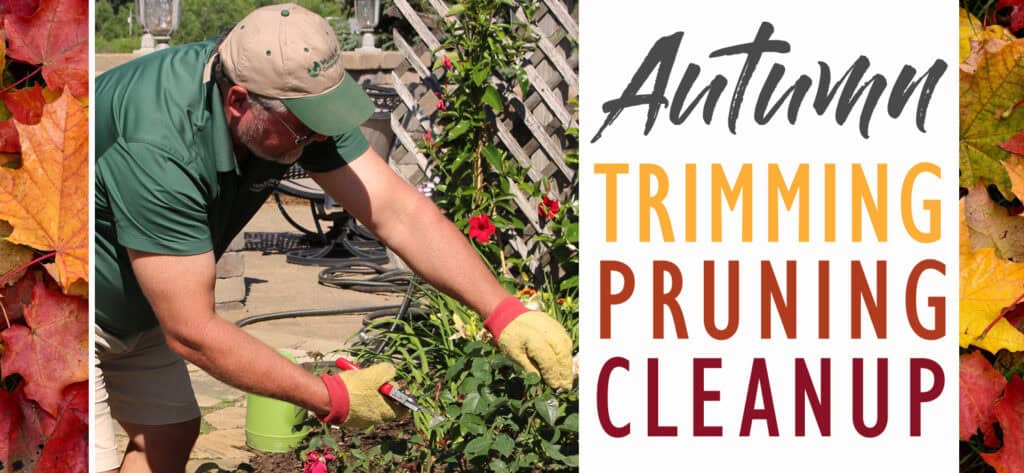To Cut or Not to Cut: Tips on Fall Trimming, Pruning and Cleanup
By Kelly Smith | September 29, 2021

To cut down, or not to cut down? Now that fall has arrived, many gardeners find themselves wondering whether they should cut back their perennials and seasonal plantings now or wait until spring. For most perennials, the answer depends on what you want from your landscape during the winter months. If your concept of the perfect winter scene is an uninterrupted, pristine blanket of snow, plan on cutting back and clearing out the perennial border each fall. Clearing out expired perennials such as hostas and daylilies will give your beds a much cleaner appearance, and are far easier to prune back in fall than in the springtime. When doing this, hedge trim all foliage down to 3″ – 5″ above the soil, using a sharp set of pruners and making sure the plants are past their bloom cycle. Keeping a few inches of foliage above the soil will help insulate the roots during the winter months and will help you locate the plant in the spring, preventing possible damage from spring yard work or mulching.
However, if you are hoping that your landscape will continue to provide interest right up to spring, schedule much of your bed work for early April. By keeping the foliage of ornamental grasses and perennials such as sedum in place, you allow your landscape to provide color and movement right up until the arrival of deep snow. Besides the show, keeping the foliage in place for the winter helps to accumulate snow over the plants. This blanket of snow is nature’s protective mulch against the extreme cold of a Wisconsin winter. Another benefit of keeping select perennial foliage in your beds is that seed heads of plants like coneflowers and black-eyed susans will provide food for birds during the winter months.
In addition to selective trimming, there is plenty of yard work to accomplish on these lovely fall afternoons. Here are a few recommendations from our team of horticulturists:
- Divide your spring-blooming perennials in fall. By dividing the plant when it is not flowering, all the plant’s energy can go toward root and leaf growth.
- Start lowering your mower height in preparation for the last mowing of the season, which should be at 2″ height.
- Spray flowering crabs with dormant oil to help control apple scab next summer.
- Aerate your lawn to help promote root growth by allowing air, water and nutrients to circulate the soil. Fall is a perfect time for aeration, thanks to cooler temperatures and warmer soil, and will give you a greener, thicker lawn come spring.
- Remove all leaves and debris from planting beds and pull out any remaining weeds.
- Prune your oak trees between mid October and mid March to prevent the spread of oak wilt.
- Remove fallen leaves in phases. Don’t allow them to pile up, as a thick layer of leaves deprives your lawn of necessary oxygen and sunlight. This can lead to flooding, fungal issues, or pests.
- Winterize your yard tools (like pruners, mowers, weed eaters, rototillers, loppers, etc.) by removing debris and gunk. Also, replace worn parts and apply oil as needed.
- Wait to prune your trees, shrubs and roses until they are fully dormant, preferably late winter for most.
Its a perfect time to get outside and enjoy the fresh fall air. Take advantage of the season with an afternoon of fall cleanup, ensuring a gorgeous home and landscape come spring. Our team is here to help you along the way, so stop in to our garden center or give us a call with any questions or concerns. And until next time, enjoy the season!



